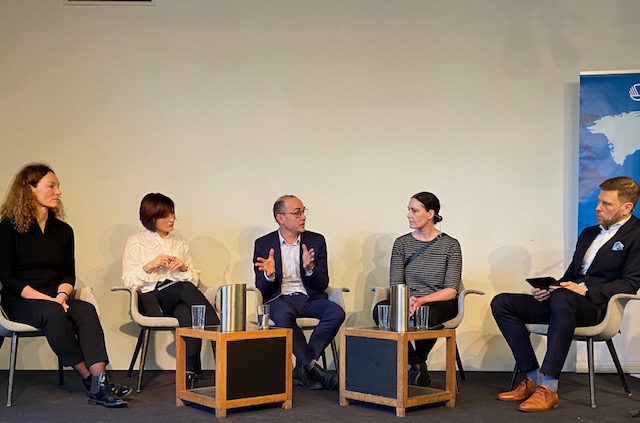On January 15th Nordforsk arranged a seminar on Myths and Facts: Gender Gaps in Nordic Educational Achievement. The seminar responded to the latest OECD report that shows that the gender gap in educational performance in Nordic schools is greater than in other European countries. In her talk, Camilla Stoltenberg, Director General from the Norwegian Institute of Health, said it is estimated that by 2030 there will be a predominance of women who have completed secondary and higher education in the world.
- We don't know what causes the gender gap where boys are falling behind. Understanding and addressing this is a grand societal challenge, and Nordic countries are well-placed to lead the research and innovation in this, she argued.

Fritjof Sahlström, QUINT researcher and Professor at Åbo Akademi in Finland, was one of the panel members discussing the possible measures for solving the gender gap.
It is clear that more research is needed, as we don't know enough about what is causing these differences. Here on the QUINT site we have already discussed the latest PISA results in another article, that indicate there is a possible correlation between the increasing amount of boys struggling with reading and their declining reading engagement in Norway. However, Sahlström emphasised that this is a complicated landscape and causalities are not necessarily easily explained. The gender differences furthermore need to be situated in a larger societal context that considers socioeconomic factors and the current political climate, and how these interplay with gender.
In the current political climate we can see growing interest in men's rights as a response to the Me Too movement, for example, Sahlström reminded.
- Even though we are discussing how boys are left behind in educational performance, we need to remember that women are still not a privileged group in the society.
- Women have for long outperformed in education, and still they have to try a lot harder in entering work life. The conversion from education to labour market tends to favour men, he argued, and called for more data from secondary education to see how children are prepared for the labour market.

The panel concluded that we need to create success for everyone in the society. Sahlström highlighted that this issue is not about boys and girls only; there are people falling outside of these categories, trans, gender diverse and the so-called Rainbow children, who are doing even worse in schools. No one should be left behind.
Helena Lohmann from Nordic Welfare Centre highlighted the need for better data for Nordic studies. Sahlström emphasised that research needs to be able to take risks.
- We don't always get it right, at first, but we need to do the work. The Nordic countries are a good test bed for understanding more about the gender gap in education. There is a need for a multidisciplinary approach, Nordic collaboration, learning from each other and new thinking.
